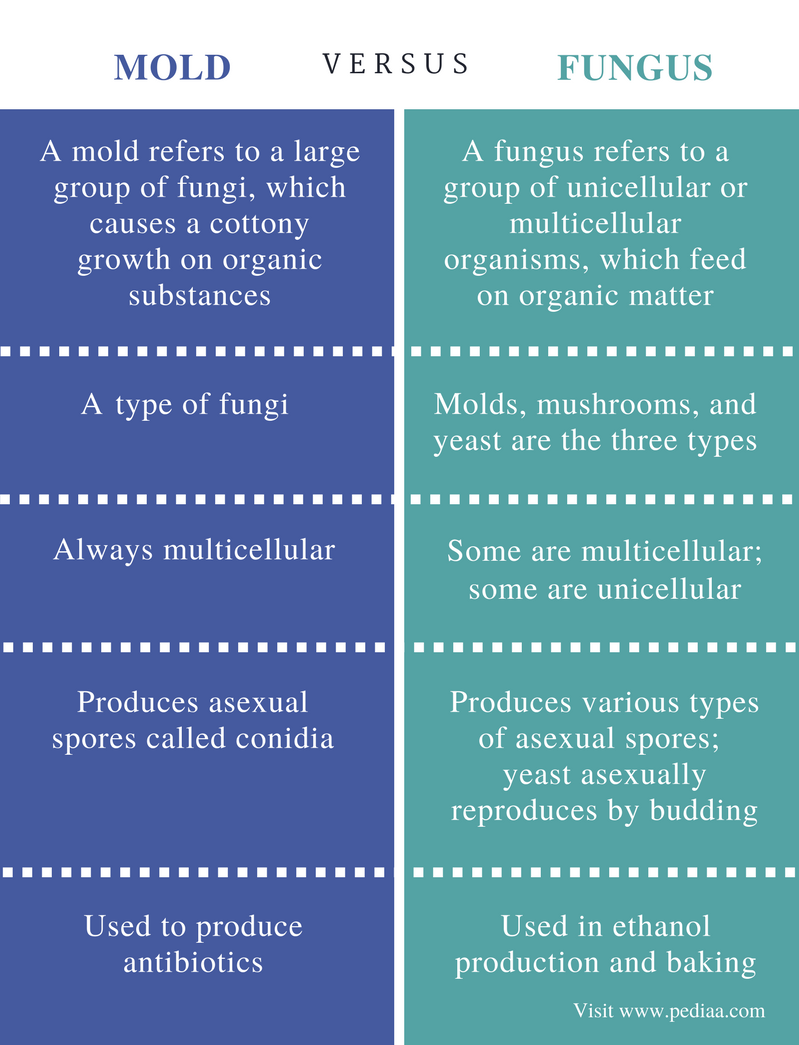Understanding how to differentiate between mold and fungi is essential for grasping the complexities of these organisms that significantly impact our environment. Both mold and fungi belong to the kingdom Fungi, yet they possess distinct characteristics that set them apart. This article aims to elucidate the differences between these two entities, focusing on their definitions, structures, reproduction, and ecological roles.
The Kingdom Fungi: An Extensive Overview
Fungi represent a vast taxonomic group that encompasses a diverse array of organisms, including yeasts, mushrooms, and molds. The defining feature of this kingdom lies in their cell structure, which is characterized by the presence of chitin in their cell walls, a trait shared with arthropods but absent in plants. Within this kingdom, the terms “mold” and “fungi” are often used interchangeably, yet they encapsulate distinct classifications.
A Walk Through the Fungal Kingdom: Defining Fungi
Fungi can be broadly categorized into several groups based on their morphology and reproductive strategies. They thrive in moisture-rich environments, often found in decaying organic matter. Comprising filamentous structures called hyphae, fungi exhibit a network-like arrangement, known as mycelium, which serves as their vegetative body.
The reproductive mechanisms of fungi can be sexual or asexual. Through the process of spore formation, fungi disseminate their species in varying ways, including wind dispersal or through physical contact with other organisms. Some common fungi include mushrooms, which are the fruiting bodies of certain fungi, and yeasts, which carry out fermentation processes.
Unravelling Molds: A Subset of Fungi
Molds, on the other hand, represent a specific category within the kingdom of fungi. They are filamentous fungi, primarily reproducing through asexual spores. Molds are characterized by their fast growth and can often be observed in damp or decomposing organic environments. Common examples include Penicillium and Aspergillus species, which are known for their role in food spoilage and industrial applications.
Molds are typically distinguished by their fuzzy, thread-like appearance caused by dense colonies of hyphae. Their colors can range from white and green to black and blue. Unlike many larger fungi, which present themselves prominently in nature, molds often remain hidden until environmental conditions favor their growth, leading to visible outgrowths that can occasionally be troublesome, particularly for indoor environments.
Morphological Variations: A Comparative Analysis
The morphological characteristics of mold and fungi illustrate their differences. Fungi, with their diverse forms, can manifest as yeasts, molds, or mushrooms, presenting a multiplicity of shapes, sizes, and colors tailored to their ecological niches. Molds, conversely, embody a more uniform structure, primarily manifesting as a mass of hyphae that flourish under specific conditions.
A Vital Examination of Reproductive Strategies
One of the most illuminating aspects of differentiating between molds and fungi lies in their reproductive strategies. Fungi may engage in complex sexual reproduction or simpler asexual reproduction through budding or spore formation. Molds typically rely on asexual reproduction via spores, which are released into the environment to facilitate distribution.
This variance in reproduction is critical when considering the lifecycle and adaptation strategies of these organisms. Fungi are often capable of adapting their reproductive strategies based on environmental conditions, whereas molds, with their relatively simple mechanisms, may require specific conditions to thrive or reproduce effectively.
Ecological Impact: Molds Versus Fungi
Both molds and fungi play pivotal roles in their ecosystems, but their contributions differ significantly. Fungi, including molds, serve as decomposers, breaking down complex organic materials and recycling nutrients back into the ecosystem. This process is vital for nutrient cycling and maintaining ecological balance.
Molds specifically exhibit a more pronounced association with decay and the breakdown of organic material, which can lead to the formation of soil. They are often found in compost heaps and contribute to the natural decomposition process. However, some molds can be pathogenic to plants and animals, leading to economic losses in agriculture or health issues in humans.
The Mood-Boosting Influences of Fungi
Interestingly, while the differences between molds and fungi are rooted in biological science, understanding these can contribute to a mood-boosting experience. The fungi kingdom includes species used in culinary applications, such as edible mushrooms, which have been found to have nutritional benefits and contribute positively to mental health.
Certain fungi, like Reishi and Lion’s Mane mushrooms, have been studied for their potential neuroprotective effects and may even contribute to enhanced cognitive function or mood regulation. Engaging with the fungal world can foster a deeper appreciation for nature and its complexities, promoting well-being and mindfulness.
The Practical Application of Knowledge: Molds in our Lives
Understanding the distinction between molds and fungi extends into everyday life. Awareness of the types of mold found in home environments can lead to better health practices and improved indoor air quality. For instance, recognizing the presence of mold can prompt necessary actions to remediate its growth, ensuring a healthier living space.
Conversely, engaging with beneficial fungi can enhance culinary practices, inviting more flavorful and nutritious ingredients into daily diets. Exploring the world of mushrooms not only diversifies diets but also offers opportunities for exploration in cooking and nutrition.
Conclusion: Embracing the Complexity of Mold and Fungi
In conclusion, distinguishing between molds and fungi encompasses a myriad of biological, ecological, and practical dimensions. The understanding of their structural differences, reproductive strategies, and ecological roles provides a foundation for appreciating their significance in our lives. While molds may often be perceived negatively due to their association with decay and spoilage, fungi offer a wealth of benefits that can enhance well-being and contribute to mood elevation.
Ultimately, a nuanced understanding of these organisms invites us to engage with the natural world on a deeper level, enriching our experiences and potentially uplifting our spirits in the process. Recognizing and valorizing the role of both molds and fungi in our ecosystem is a step toward fostering a balanced relationship with our environment.
